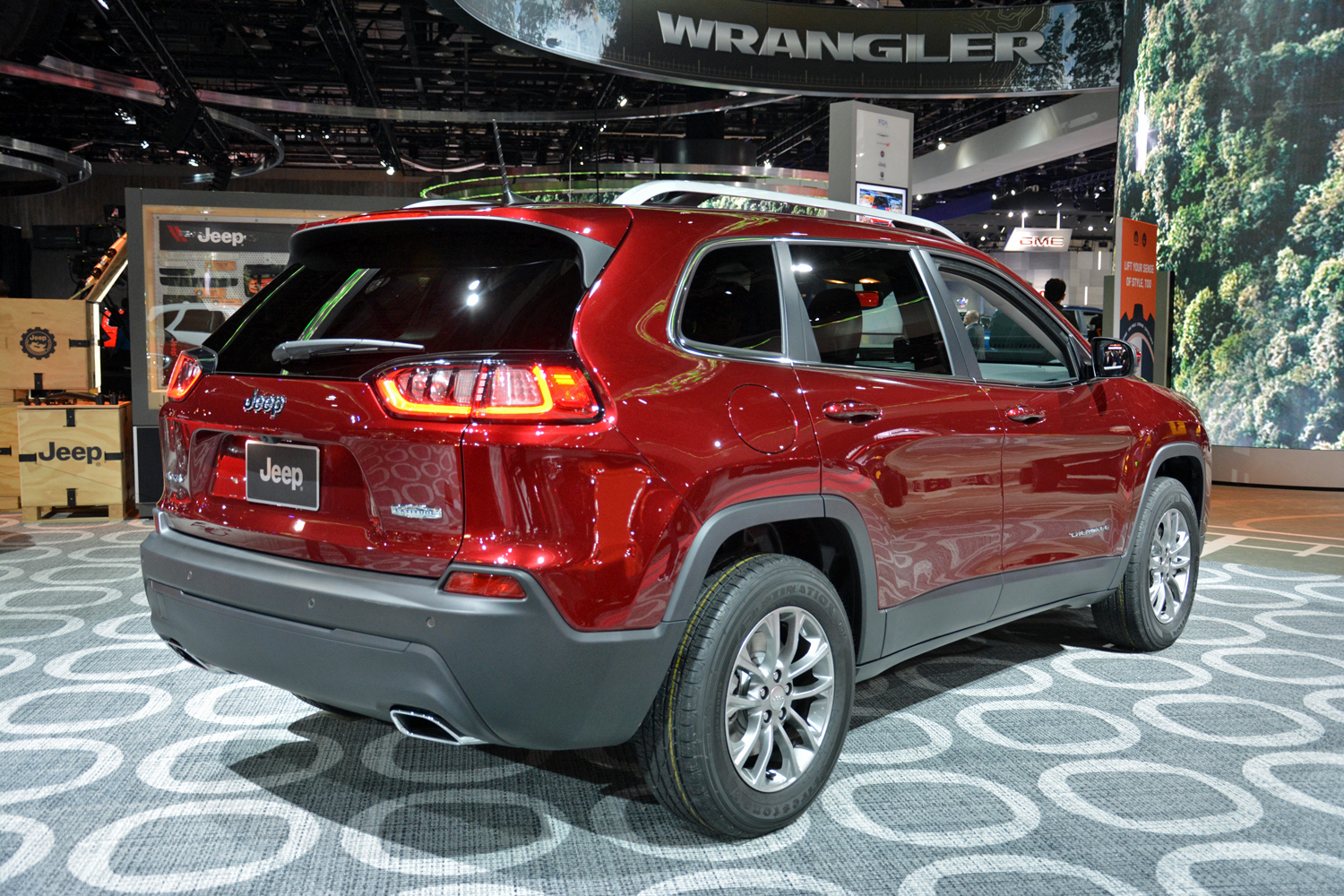Jeep introduced the current-generation Cherokee in 2013 to mild derision. Critics argued it fell into an unspecified species of the SUV segment that, for all they knew, might have been spitballed to Earth from a distant planet. The reason? Its polarizing front end. The updated 2019 Jeep Cherokee introduced at the 2018 Detroit Auto Show adopts a less contentious design.
The front end receives the bulk of the changes. Formerly separated, the headlights and the daytime running lights now form a single unit that starts at the edge of the hood and gently flows into the front fender. The new look is vaguely reminiscent of the brand-new second-generation Compass and, to a lesser extent, the bigger Grand Cherokee. It’s certainly more palatable this way.
Looking at the Cherokee’s rump reveals more visual tweaks. The lights are bigger, with integrated U-shaped LED accents, and the license plate moves up from the bumper to the hatch. Beauty is in the eye of the beholder, but to us, the updates Jeep made to the Cherokee are a step in the right direction.
Peeking inside reveals the updates for the 2019 model year are mostly skin-deep. The Cherokee carries on with a three-spoke multifunction steering wheel, a large screen embedded in the dash for Jeep’s latest Uconnect infotainment system, and an available driver-configurable screen in the instrument cluster. The carmaker points out several new option packages are available for buyers looking to spruce up the cabin, with Apple CarPlay and Android Auto connectivity both available.
The specifications sheet gets a makeover, too. New for 2019 is a turbocharged 2.0-liter four-cylinder tuned to generate 270 horsepower and 295 pound-feet of torque. It’s equipped with direct fuel-injection and a start/stop system, but the Environmental Protection Agency hasn’t revealed fuel economy figures yet. Other engine options include the familiar 3.2-liter Pentastar V6, which makes 271 hp, and the 2.4-liter Tigershark four-cylinder, which provides 180 hp. Jeep’s refreshed nine-speed automatic transmission comes standard regardless of which engine is installed behind the car’s seven-slot grille.
The 2019 Jeep Cherokee will arrive in showrooms in the coming months. Look for a pricing announcement before then. The new features could make the 2019 model slightly more expensive than the outgoing version, but it’s not expected to stray too far from the roughly $25,000 base price of the 2018 model.
Updated by Ronan Glon: Added full information, live images.










